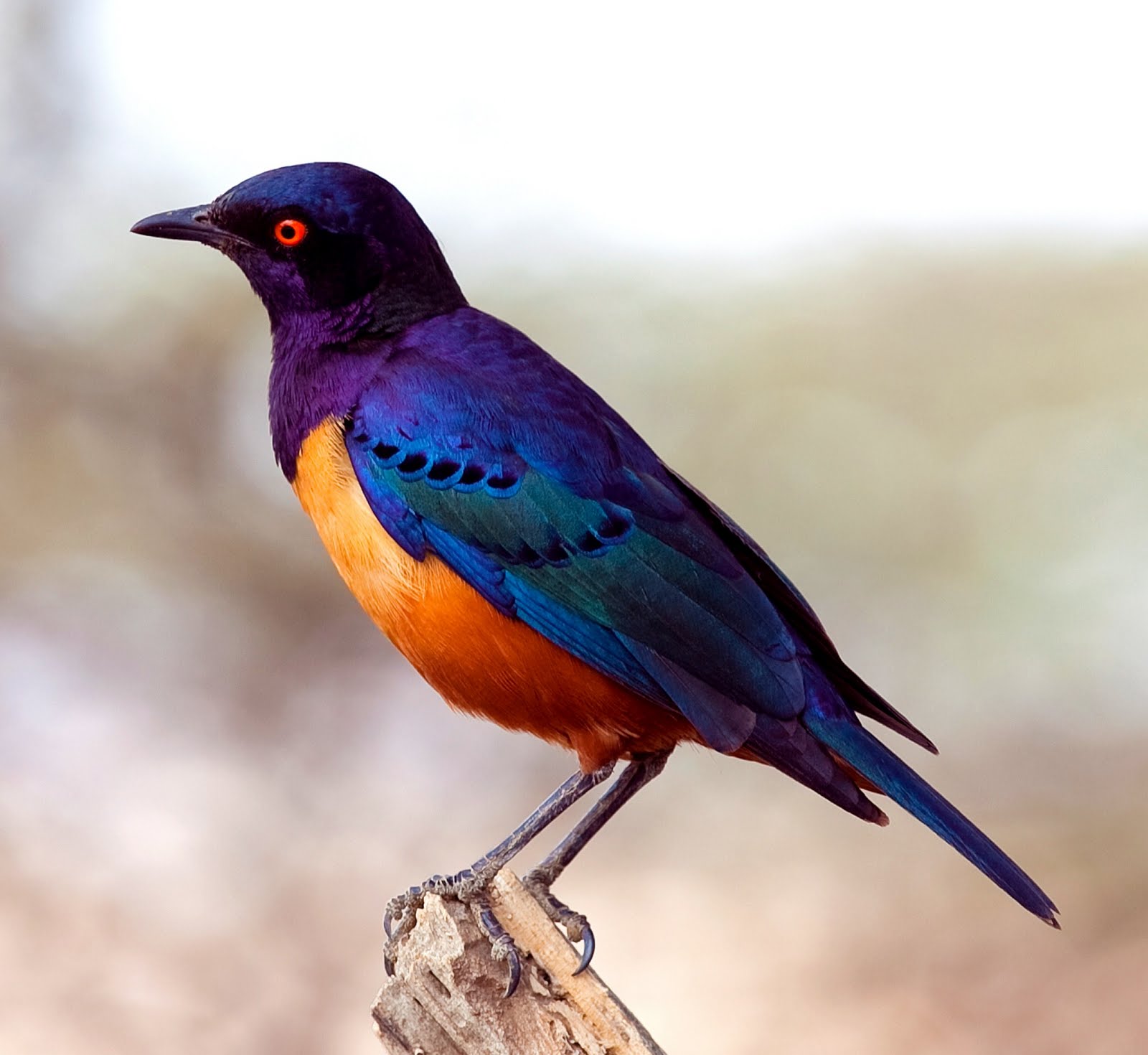Lamprotornis hildebrandti
 |
| Photo by Neal Feans (Wikipedia) |
Common name:
Hildebrandt’s starling (en); estorninho-metálico-de-Hildebrandt (pt); choucador de Hildebrandt (fr); estornino de Hildebrandt (es); Hildebrandt-glanzstar (de)
Taxonomy:
Order Passeriformes
Family Sturnidae
Range:
This African species is only found in Kenya and Tanzania.
Size:
The Hildebrandt’s starling is 18 cm long and weighs 50-70 g.
Habitat:
This species is found in open woodlands and open thornbush areas, generally at altitudes of 600-2.000 m.
Diet:
They feed on the ground, taking grasshoppers and beetles, but also seeds and fruits of plants like Carissa edulis, Euclea, Rhus and Apodytes dimidiata.
Breeding:
Hildebrandt’s starlings have 2 breeding periods, one in March-May and another in October-December. Although they usually breed in pairs, cooperative breeding has been recorded on some occasions. They nest in tree cavities, either natural or old woodpecker nests, building a nest cup inside the cavity using plant fibres. There the female lays 3-4 eggs, which she incubates alone for 12-14 days. The chicks fledge 19-22 days after hatching.
Conservation:
IUCN status – LC (Least Concern)
This species has a relatively large breeding range and, although the global population size has not been quantified, the species is described as uncommon. The population is suspected to be stable in the absence of evidence for any declines or substantial threats.







